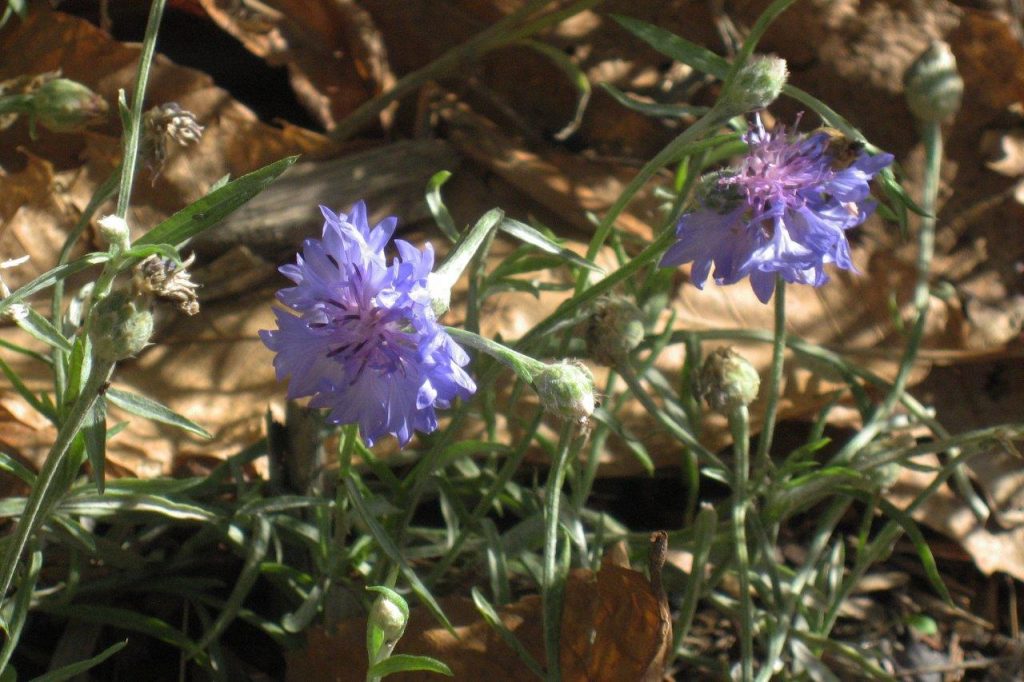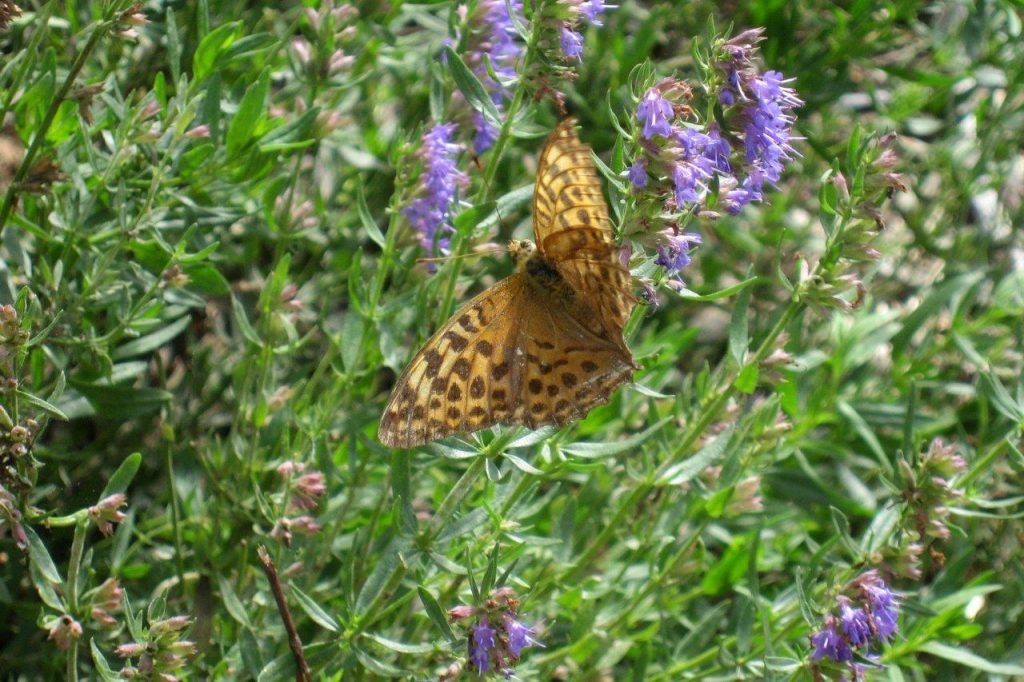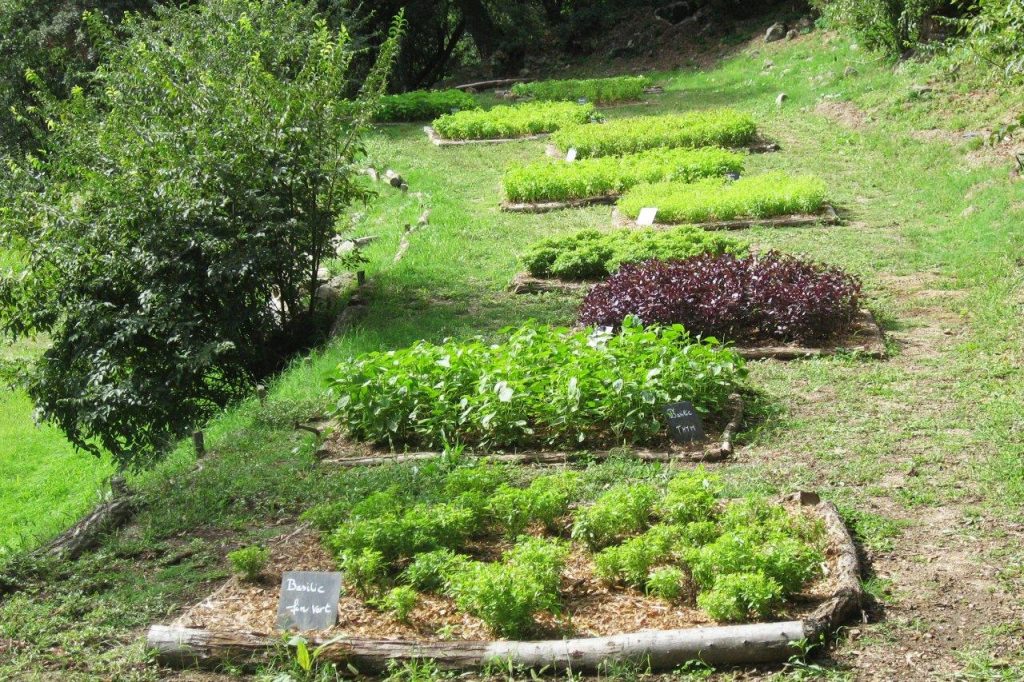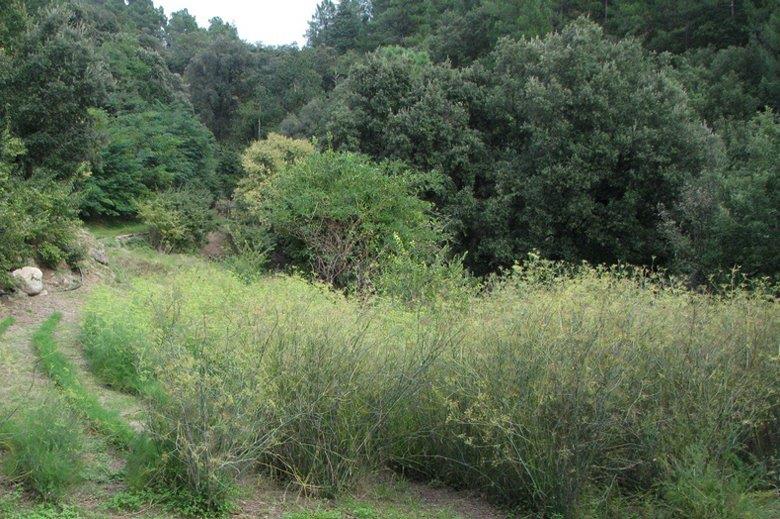September 2012 – A visit to Le Jardin de Mazet
Click on the images to enlarge them / Cliquez sur les images pour les agrandir
Marie de Hennezel welcomed us to her remarkable garden in the hills of the southern Cévennes. The site is stunning with views over chestnut clad hills.
The garden is laid out on ancient terraces and has a watering system fed by springs, a well and water reserves from runoff. The soil is granite with little top soil so Marie adds a great deal of homemade mulch and compost. Up in the hills wild boar are rampant and do a lot of damage so there are electric fences to keep them out.
Marie began by describing the property and told us that she wanted to do something useful with the land and had had the idea of putting in plants that heal. For healing products, the purity of the soil, the water and the air are of the utmost importance. They are regularly tested to ensure that when we drink her healing teas, the active ingredients in the remedies are all we ingest. She explained that the plants that grow in the wild are those that heal the most common complaints of the indigenous population. In Europe and the west many of our ills originate in the digestive system, even if their symptoms manifest themselves elsewhere, so many wild plants are good for the digestive tract. In the Jardin de Mazet, Marie cultivates acacia, basil, blackcurrant, fennel, mint, oregano, meadowsweet, rosemary, sage and verbena. She told us that in the Cévennes it was customary to take a purifying cure at each solstice.
Our first stop was at a mulberry tree, so important in this region for the silk industry that it was called the gold of the Cévennes, but interesting too for its healing properties. Marie explained not only the medicinal properties of each plant but also the traditions attached to it. Centaurea cyanus, the cornflower, is grown for its gentle properties as an eye wash or taken internally as a diuretic and to regenerate the pancreas, and in the days when poppies and cornflowers grew amongst the corn, it seemed to cause the wheat produced to be much stronger.
A lovely plant for the garden, Hyssopus officinalis, which has been a sacred plant since biblical times, is good for respiratory ailments.
We talked about sage, Salvia officinalis, fennel, Foeniculum vulgare and oregano, one of the few plants with antibiotic properties and smelt each different species and variety in the extensive basil collection.
In front of a planting of Aconitum napellus, Marie explained the importance of correct identification, as some plants can be very poisonous.
In the drying house, where there was a satisfying mixture of aromas, there is a sophisticated air flow system which runs without electricity. Here we learnt about the importance of harvesting correctly. Never pick a wet plant, wait till the morning dew has dried then the sap rises and the active ingredients are at their most intense. Midday is the optimal moment to harvest. The plants must be dried gently – to retain their properties, a temperature of 20° to 25° is ideal. If dried plants are stored in the dark they will last many years.
After lunch we sat on the terrace and tasted both fresh and dried flowers and leaves, learning more about their properties. The most important question for us was how to make herbal tea, did we need one flower or a kilo? Here are Marie’s instructions.
There are three ways to make a tea, or tisane:
Maceration: leave the flowers or leaves to steep overnight or for up to 24 hours in cold water then filter.
Infusion: pour a litre of freshly boiled water over three pinches of the plant, leave to steep for five to six minutes, and then filter.
Decoction: into a litre of boiling water put three pinches of one plant, or one pinch each of three different plants, cover and simmer for three minutes, leave to steep for three minutes, then filter.
I wondered, at the end of the day, what tasting so many plants, each with different properties, calming, de-toxing, stimulating, might do to us. Later in the evening, as I write this, I think stimulating has won out. It was a fascinating day spent with a knowledgeable and passionate woman who has transformed a Cévenole hillside into a garden which supports an enterprise that is devoted to promoting well being.
You can find all the teas and how and when to use them at: www.mariedemazet.com.
Text: Katharine Fedden
Photos: Catriona McLean
![]()








